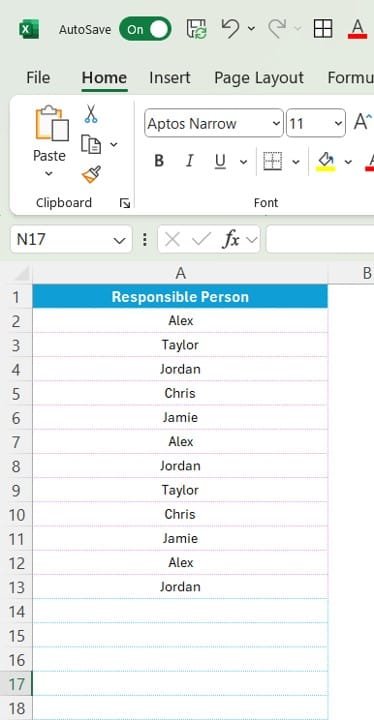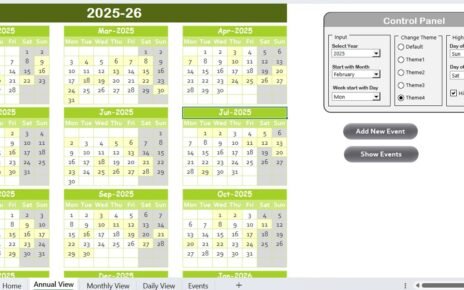Managing an investment portfolio can feel overwhelming, but it doesn’t have to be. With the right approach and tools, you can simplify the process and take control of your investments. That’s where an Investment Portfolio Checklist comes in handy. This step-by-step guide helps you stay organized, ensures no important tasks slip through the cracks, and aligns your portfolio with your financial goals.
In this article, let’s dive into what an Investment Portfolio Checklist is, its benefits, and how you can create and use one effectively.
What is an Investment Portfolio Checklist?
An Investment Portfolio Checklist is like a roadmap for managing your investments. It helps you keep track of every step, from setting goals and analyzing risks to monitoring performance and rebalancing your portfolio. By following this checklist, you can ensure your portfolio is well-structured and aligned with both short-term and long-term financial objectives.
Click to Investment Portfolio
Key Features of the Investment Portfolio Checklist Template
Our Investment Portfolio Checklist Template is designed to make your portfolio management efficient and stress-free. Let’s break it down into its main components:
Investment Portfolio Checklist (Main Worksheet)
This is where the action happens. It’s your primary workspace to organize and monitor all key portfolio tasks.
Top Section Highlights:
- Total Count: Displays the total number of tasks in your checklist.
- Checked Count: Tracks the tasks you’ve already completed.
- Crossed Count: Shows tasks that are either incomplete or irrelevant.
- Progress Bar: Gives you a visual snapshot of your task completion percentage.
Checklist Table Includes:
- Serial No.: Automatically generated for quick reference.
- Checklist Item: Clearly states the task to be completed.
- Description: Provides additional context or details about the task.
- Responsible Person: Identifies who is accountable for completing the task.
- Deadline: Specifies when the task must be finished.
- Remarks: Allows space for notes or updates about the task.
- Status: Use ✔ for tasks completed and ✘ for those still pending.

Click to Investment Portfolio
List Sheet Tab
The secondary worksheet simplifies data entry. It captures unique values, such as the names of responsible persons, and creates dropdown menus in the main table to ensure accuracy and consistency.

Click to Investment Portfolio
Why Should You Use an Investment Portfolio Checklist?
Using an Investment Portfolio Checklist makes managing your investments easier and more organized. Here are the main benefits:
- Streamlined Organization: A checklist breaks down complex tasks into smaller, actionable steps, making everything easier to manage.
- Improved Decision-Making: When tasks are clearly laid out, you can make well-informed decisions about allocations, risk management, and adjustments.
- Accountability: Assigning tasks to specific individuals ensures clarity and prevents miscommunication.
- Better Risk Management: A well-maintained checklist helps you stay on top of risks, ensuring your portfolio remains aligned with market conditions and your financial goals.
- Real-Time Tracking: With tools like a progress bar and summary metrics, you can easily monitor how far along you are and identify areas needing attention.
Best Practices for Using an Investment Portfolio Checklist
To get the most out of your checklist, follow these best practices:
- Customize It to Your Goals: Every investor has unique objectives. Modify the checklist to reflect your specific tasks, deadlines, and priorities.
- Review and Update Regularly: Your portfolio isn’t static, and neither should your checklist be. Update it frequently to include new tasks or adjust for market changes.
- Set Realistic Deadlines: Make sure the deadlines you set are achievable. Unrealistic deadlines can cause unnecessary stress.
- Leverage Automation: Use formulas, conditional formatting, or automation tools in Excel to track your progress and even send reminders.
- Conduct Quarterly Reviews: Revisit your portfolio every quarter to rebalance assets and ensure everything aligns with your financial goals.
Opportunities for Improvement in Portfolio Management
Even the best checklists can get better. Here are some ways to improve your Investment Portfolio Checklist:
- Add Advanced Analytics: Include columns to track historical returns or compare performance against benchmarks. This helps in making more informed decisions.
- Enable Real-Time Collaboration: Use cloud-based tools like Google Sheets so that multiple people can access and update the checklist simultaneously.
- Incorporate Risk Metrics: Add a section for risk assessment to evaluate and prepare for potential market fluctuations.
- Automate Rebalancing Alerts: Set up notifications to remind you when it’s time to rebalance your portfolio based on thresholds you’ve set.
Why Choose Our Investment Portfolio Checklist Template?
Our template is designed to make portfolio management as simple and effective as possible. Here’s why it stands out:
- Comprehensive Data Tracking: Covers every critical task in detail.
- Visual Progress Tools: Includes a progress bar and summary metrics for easy tracking.
- Customizable Features: Adapt it to suit your unique goals and preferences.
- Error-Free Data Entry: Dropdown menus eliminate mistakes and improve consistency.
- Automated Insights: Real-time updates help you stay on track without extra effort.
Using this template will save you time, reduce stress, and help you achieve better investment outcomes.
How to Create Your Own Investment Portfolio Checklist
If you prefer to build your own checklist from scratch, here’s how to get started:
Step 1: Define Your Goals
Identify your short-term and long-term financial objectives.
Step 2: Set Up Essential Columns
Include these columns:
- Serial No.
- Checklist Item
- Description
- Responsible Person
- Deadline
- Remarks
- Status (✔ or ✘)
Step 3: Add Progress Tracking Tools
Use Excel formulas to calculate task completion percentages and display them in a progress bar.
Step 4: Create Dropdown Menus
Store unique values, such as responsible persons, in a secondary sheet to simplify data entry.
Step 5: Test and Refine
Run through a few examples to ensure your checklist covers everything and works smoothly.
Frequently Asked Questions (FAQs)
- What is the main purpose of an Investment Portfolio Checklist?
It helps you organize and streamline the management of your portfolio, ensuring every important task is addressed.
- Can this checklist work for both personal and business investments?
Yes, it’s versatile enough to handle personal finances and professional portfolio management.
- How often should I update my checklist?
You should update it quarterly or whenever there’s a significant change in your financial situation or market conditions.
- How can I track overdue tasks?
Use conditional formatting in Excel to highlight overdue tasks in red, making them easy to spot.
- Is this checklist shareable?
Absolutely! Use cloud tools like Google Sheets to collaborate with team members or financial advisors in real time.
Final Thoughts
An Investment Portfolio Checklist is more than just a tool—it’s your companion in achieving financial success. By organizing tasks, tracking progress, and staying consistent, you can manage your investments with confidence and clarity. Whether you’re just starting or are a seasoned investor, this checklist provides the structure you need to stay on track.
Visit our YouTube channel to learn step-by-step video tutorials
View this post on Instagram


